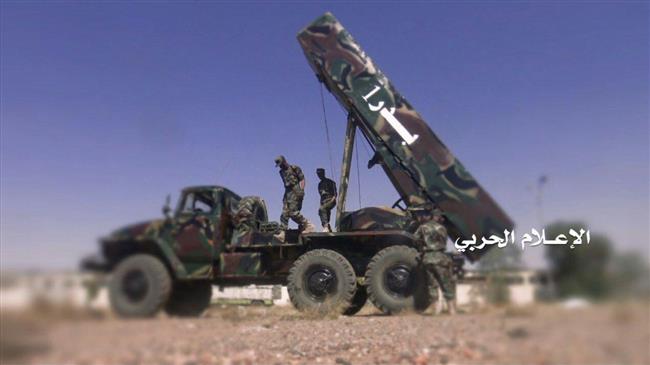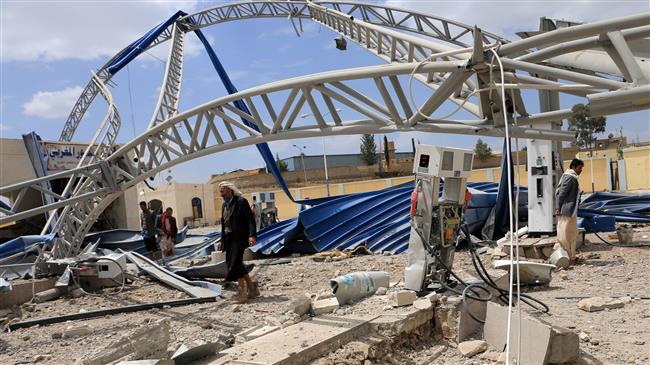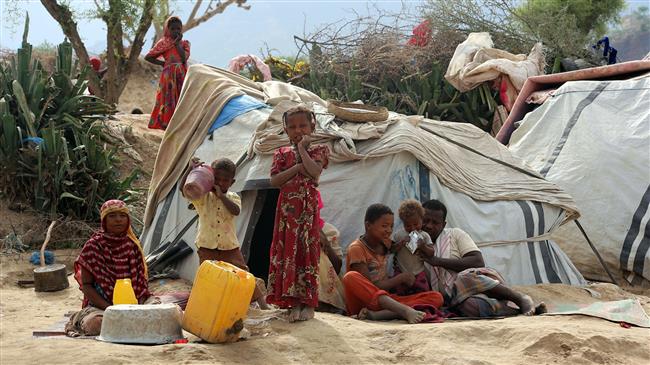Araweelo News Network

this file picture, Yemeni forces prepare to launch a domestically-manufactured Badr-1 ballistic missile at a military site in Saudi Arabia’s southern border regions of Najran. (Photo by Yemen’s Joint Operations Command)
Sana’a(ANN)-Yemeni army forces, supported by allied fighters from Popular Committees, have fired a domestically-designed and -developed ballistic missile at a strategic economic target in Saudi Arabia’s southwestern border region of Jizan in retaliation for the Riyadh regime’s devastating military aggression against their impoverished country.
A Yemeni military source, speaking on condition of anonymity, said the short-range Badr-1 missile struck Jizan port, situated on the southern Red Sea coast and approximately 970 kilometers southwest of the capital Riyadh, with great precision on Thursday, Arabic-language al-Masirah television network reported.
Separately, Saudi fighter jets dropped cluster bombs on farming fields and residential buildings across Munabbih district in Yemen’s mountainous northwestern province of Sa’ada.
There were no immediate reports about possible casualties or the extent of damage caused.
Dropped from the air or fired from the ground, they are designed to break open in mid-air, releasing the sub-munitions over a wide area in a way that cannot discriminate between civilians and military targets.

Men inspect a damaged petrol station after it was hit by Saudi airstrikes on the outskirts of the Yemeni capital Sana’a on May 21, 2018. (Photo by AFP)
Many of the sub-munitions fail to explode on impact and effectively become anti-personnel mines. Unexploded sub-munitions have the potential to remain lethal for years, posing a high risk to the civilian population, both during and after the conflict.
Cluster bombs are banned under the Convention on Cluster Munitions (CCM), an international treaty that addresses the humanitarian consequences and unacceptable harm caused to civilians by cluster munitions through a categorical prohibition and a framework for action. More than 100 countries signed the treaty.
The Yemeni Ministry of Human Rights announced in a statement on March 25 that the Saudi-led war had left 600,000 civilians dead and injured since March 2015.
The United Nations says a record 22.2 million Yemenis are in need of food aid, including 8.4 million threatened by severe hunger.

A displaced Yemeni family sits outside their tent at a makeshift camp for displaced people, where they are taking shelter in Haradh area, in the northern Abys district of Yemen’s Hajjah province on May 12, 2018. (Photo by AFP)
A high-ranking UN aid official recently warned against the “catastrophic” living conditions in Yemen, stating that there was a growing risk of famine and cholera there.
“People’s lives have continued unraveling. Conflict has escalated since November driving an estimated 100,000 people from their homes,” John Ging, UN director of aid operations, told the UN Security Council on February 27.
Ging said cholera had infected 1.1 million people in Yemen since last April, and a new outbreak of diphtheria had occurred in the war-ravaged Arab country since 1982.
Source: Presstv.com




